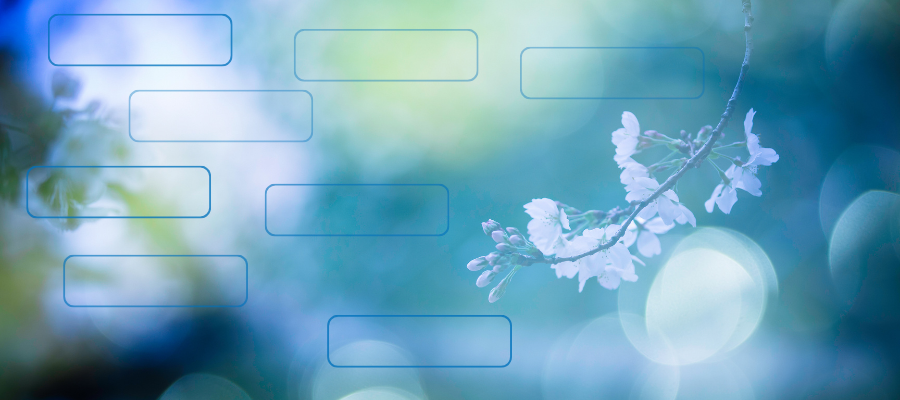
What if your visual note-taking app was so smart that it could “dream” – discovering new associations and relationships between your ideas and curating them for your next visit? It would work just like your amazingly powerful subconscious mind, which continues to ruminate on ideas even when you’re not consciously thinking about them.
This is no longer the stuff of wild “What if?” fantasies. It’s now reality, thanks to the team at Napkin, an innovative visual note-taking app that I’ve written about before.
From the start, Napkin was designed as a serendipity engine, employing AI to automatically display notes that are related to the one you’re working on. But it now continues this process when you’re away from the app.
The idea of an app being able to “dream” fascinated me. So I just had to reach out to Napkin cofounder David Felsman to learn more. In this new interview with him, he provides a fascinating look at where Napkin is headed.
Chuck Frey: In a recent email, you announced that Napkin will continue “dreaming” about each user’s notes, even when they’re not using it. What does that mean? What is your AI algorithm actually doing?
 David Felsman: We try to keep the communication about how Napkin works not too technical. We design Napkin in a way so that you don’t have to think about how it works to feel it’s benefits. But since you are asking I am happy to shed some light on Napkin’s dreams. When you add a new idea to your Napkin, a three-step process is happening in the background:
David Felsman: We try to keep the communication about how Napkin works not too technical. We design Napkin in a way so that you don’t have to think about how it works to feel it’s benefits. But since you are asking I am happy to shed some light on Napkin’s dreams. When you add a new idea to your Napkin, a three-step process is happening in the background:
First, Napkin checks for matching tags that you have in your collection already.
Next, it checks for matching tags that other Napkin users have in their collection and adds these as well.
Finally, when appropriate, Napkin adds completely new tags that don’t fall in category one or two to avoid echo chamber effects. This process happens not only when you’re adding an idea but on a regular cycle for all of the ideas you’ve ever added to Napkin. That means even old ideas get new connections!
Here’s an example: Say you came across a Marcus Aurelius quote a year ago, collected it and Napkin saw the topics “philosophy” and “wisdom”. And then, recently, you went down the stoic rabbit hole and tagged some collected ideas with “stoicism”, which is a new tag in your collection. It was not there a year ago when you captured the Marcus Aurelius quote. In it’s dream state, Napkin will revisit it quote and see that now “stoicism” is one of your topics and will associate the quote accordingly.
Frey: What led you to create this enhancement for Napkin? What needs does it fill?
Felsman: We are currently building the Napkin mobile app. The mobile experience will rely on automatically curated flows of ideas. We want our customers to have one place to collect ideas over their lifetime to build their personal well of inspiration. When thinking about the usage over a longer stretch of time, over the years, over decades, through different phases in life with different interests, it becomes obvious that the entire collection needs to be reorganized constantly – like memories and associations in our brain.
Frey: How does this enhancement extend Napkin’s already-awesome “automated serendipity” approach?
Felsman: You’ll see more surprising connections and combinations between your long-forgotten ideas.
Frey: Is “dreaming” now part of the way in which Napkin operates by default, or is it something users need to switch on?
Felsman: This will be the default. A first version of it is live. Many improvements to it are still in the making.
Frey: How will this change the user experience? Will Napkin notify them of new connections it has discovered while they were away?
Felsman: In the mobile app you’ll be presented with a daily flow of ideas, freshly curated for you. It will display old ideas with new connections to recent topics.
Frey: Tell me more about the mobile app. How will it enable idea capture? I’m a huge believer in capturing my ideas and inspirations any time, anywhere. I frequently use Siri to automatically transcribe them into text on my iPhone. Will users be able to use their smartphone’s dictation app to enter ideas into the Napkin mobile app?
Felsman: With the Napkin mobile app, you can type, dictate, scan (also handwritten to a certain degree) and clip ideas when you read via your share sheet on your iPhone and a browser extension for your computer. For even more convenience, we will build syncs with Readwise, Kindle and Snipd.
Frey: You said that when users first open the Napkin mobile app, they’ll be immediately presented with a flow of new ideas and connections. This sounds different than most note-taking apps, which simply display a reverse chronological list of all your notes. How will this flow of ideas revolutionize how Napkin users leverage their notes?
Felsman: One analogy I like that eplains the impact it will have is Spotify. Before Spotify, you opened iTunes and saw your complete catalog of music. You had to either scroll through the library until something interesting popped up that matched your mood at the moment, or you had to know what you wanted to hear in advance, know the title or the artist and then search for it. Same with traditional note-taking apps.
Then Spotify came along and started presenting personalized entry points into your collection (and the broader music catalog, too). You open the app because you want to hear music. Even if you don’t know which song you want to hear now, it’s worth opening because curated mixes around certain moods are offered on the start screen and just you’re just one tap away from unexpected pleasures that have been tailored to your tastes, like weekly discovery playlists, mixtapes, workout music, you name it.
Now imagine this for your book highlight collection. Do you want to enter a flow of motivating ideas, or calming ideas or ideas around topic xyz? Do you want to travel through time and see what was on your mind 6 months, 1 year or 5 years ago? Do you want to see your favorite ideas and new connections around them? We have many ideas around this of varying levels of complexity.
Frey: What’s your goal for when the Napkin mobile app will be released?
Felsman: We start ramping up private beta testers in October. The time we leave beta and launch is hard to predict. But curious minds are invited to hop on our waitlist to test the private beta. (https://napkin.one).
Frey: You mentioned the idea that we change over time and therefore we need to periodically reorganize our personal knowledge base so it remains relevant and useful. What are some of the ways in which you’re thinking about enabling that process in Napkin?
Felsman: An idea collection in Napkin is always evolving like a garden. With each new piece of information, there are new connections and dynamics in the structure. One good example of this is the dreaming of Napkin we talked about earlier.
Frey: Are there any plans to provide users with more tools that enable them to visualize their ideas and their relationships in new ways?
Felsman: Yes, we’ve laid a solid foundation to enable this. At Napkin, we have a big passion for data visualization. Some of the most talented and experienced professionals in this arena have become advisors to support our development. We built the mobile app based on an engine that is normally used for games. We want to have absolute freedom in creating the most joyful and beautiful experience.
Frey: What’s next for Napkin?
Felsman: Building Napkin for iOS is not a adaptation of Napkin desktop. It feels like a new product. It has the learnings of the last two years woven into it. It will be a piece of art. We are onboarding larger cohorts from our waitlist to sneak peek the private beta in October.

Leave a Reply